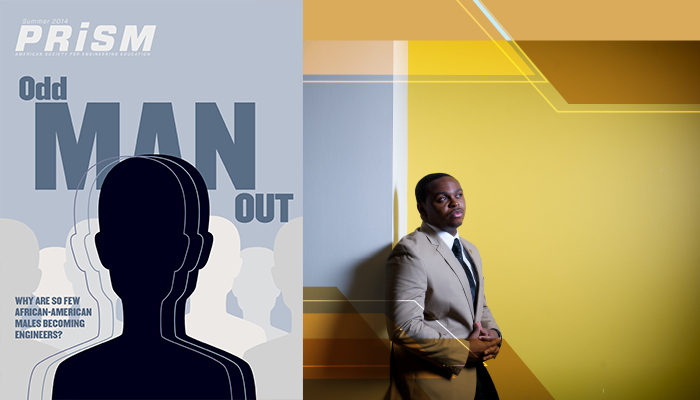Survival Course

William Tomlinson, a Ph.D. student in computer engineering at Northeastern University
African-American males represent a sliver of engineering enrollment. More could succeed if schools understood what it takes to beat the odds.
“You’ve already overcome challenges to a certain degree,” Willie Rockward reminds freshmen at all-male Morehouse College, alma mater of the Rev. Martin Luther King, Jr. and other African-American leaders. While too many of their peers are “in jail, in a morgue, or on the way” to one or the other fate, these young men, on average, have earned 3.2 high school GPAs. But steeper challenges await them in the Physics and Dual-degree Engineering Department that Rockward chairs, including two preliminary semesters of “tough math.” And before students enter Morehouse’s 3-plus-2 partnership with one of 14 engineering schools, including Georgia Tech, Rensselaer Polytechnic Institute, and the Rochester Institute of Technology, they’ll take three semesters of physics.
Such back-to-basics rigor is one school’s answer to a longstanding, perplexing question in engineering education: Why are there still so few African-American men? While black males account for 5 percent of the college population, they represent just 4 percent of undergraduate engineering enrollment, 3.3 percent of graduates, and 2.7 percent of master’s recipients. A tiny fraction reaches the professional pinnacle. According to the Journal of Blacks in Higher Education, African-Americans represent just 1 percent of National Academy of Engineering members.
For Morehouse freshmen and African-American males across the country, reaching college is itself an achievement. Just 52 percent of young black men graduate from high school in four years, less than a fourth enroll in college, and their incarceration rate is seven times that of whites. “We’re losing young black males throughout the educational pipeline,” says James Moore, Distinguished Professor of Urban Education at Ohio State University. Once on campus, many will struggle financially and academically. About 45 percent of Morehouse students and two thirds of black men overall won’t finish in six years. Some bright students who might gain acceptance to elite schools settle instead for less competitive colleges.
Those who pursue engineering face a particularly grueling and lonely slog. They often arrive with little exposure to the engineering profession or understanding of what it requires. Inadequate high school preparation requires them to play catch-up with classmates who took calculus or Advanced Placement physics and chemistry. That stretches time to graduation and adds costs. At majority-white institutions, black engineering students find few faculty members and potential mentors who look like them.
Someone on Your Side
Some schools, faculty members, and campus organizations such as the National Society of Black Engineers, seek to improve the odds of success. “I had a lot of people in my corner,” says William Tomlinson, a Ph.D. student in computer engineering at Northeastern University. Growing up, he didn’t encounter many “positive figures in general.” Now, at each stage of his academic or work life, he makes finding and keeping mentors a priority. “You have to hold on to individuals who show an interest in your success,” he says.
Tomlinson’s odyssey along with efforts by engineering programs to support African-American males are detailed in “Survival Course,” the May/June 2014 cover story in ASEE’s Prism magazine from which this post is excerpted. It was written by editor Mark Matthews and freelance writer Margaret Loftus.
Filed under: Special Features
Tags: African American scientists and engineers, ASEE, black male engineering students, engineering education, Feature Story, Prism magazine, Public Policy, STEM education








